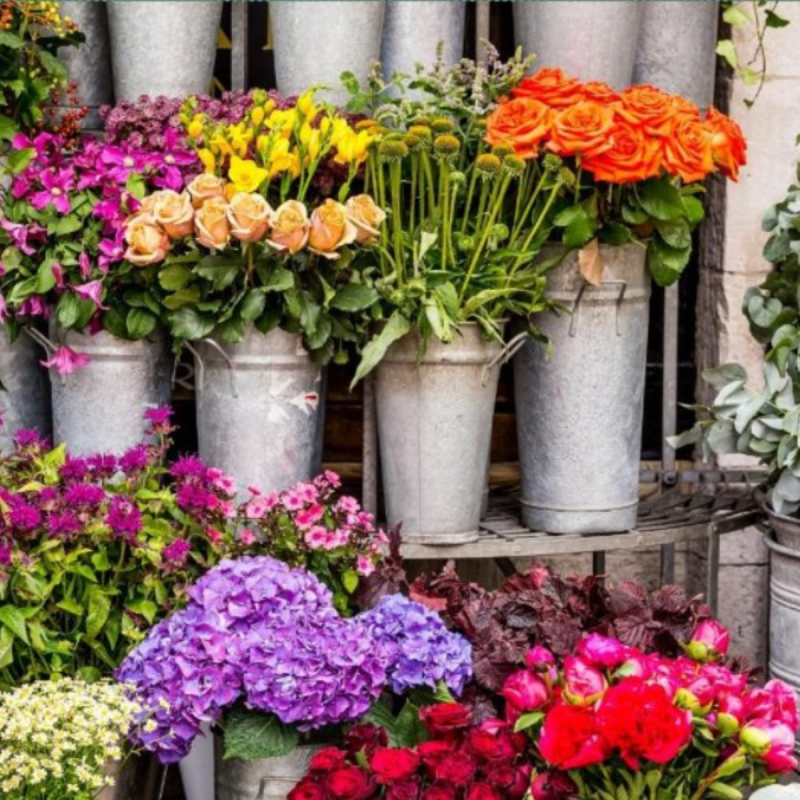Study: consumer attitudes & buying behaviour – phase II
In 2024, we commissioned a study into the attitudes and buying behaviour of flower and plant buyers in the Netherlands, France, United Kingdom and Germany. After conducting a survey among over 4,000 consumers, which focused on shopper segmentation and purchase motivation, phase II consisted of a qualitative study examining various factors during the shopping experience: emotions, motives, barriers, viewing patterns and navigation in the shop. Consumers answered questions and eye tracking was used to determine exactly where their attention was directed.

Motives and barriers for flowers
The qualitative study showed that people perceive buying flowers as a moment of joy and self-care. The retail environment can play a role in this: a relaxing environment with vibrant colours and fresh products stimulates the senses. Appearance, freshness and a long vase life are the top considerations when buying a bouquet, and consumers are willing to pay more for flowers in trendy colours and shapes. Scent evokes an emotional connection, but does not influence the choice of flower.
Motives and barriers for plants
Expected challenges and risks play a role when buying plants. Besides size, type and appearance, user-friendliness is important for many consumers. Good plant health is essential, although some consumers view saving a plant as a challenge or learning experience.
Eye tracking as method
Eye tracking is used to observe and analyse how consumers visually interact with products, displays and the shop environment. For this study, participants were given special glasses, which were equipped with a camera, to register in real time where and how long they looked at different elements. The results showed, among other things, that navigation in the shop is largely determined by product colour. The study resulted in a number of interesting insights, the most important of which have been summarised below.
Ten important insights and tips:
1. Presentation height: Plants displayed at eye level attract the most attention. Plants displayed on the ground receive less attention.
2. Communication: Information displayed between the plants and flowers attracts more attention than higher (navigation) signs or floor displays.
3. Colour coding: Consumers need an overview, especially in larger shops. Colour coding can help to quickly identify different categories or plant varieties, which makes navigation more intuitive and effective. Clear and contrasting colours allow you to draw the attention of shoppers to specific areas or products.
4. Visual focus: Consumers immediately gaze at the most eye-catching coloured flowers, rather than the communication. Colourful sections, especially those featuring flowers, attract more attention than green ones. Therefore, alternate green plants with flowering plants and make sure they vary in height.
5. Quality check: For plants, consumers check whether the leaves are healthy and/or whether the soil is moist.
6. Labels: Consumers read labels (easy maintenance, bee-friendly, colourful garden, etc.).
7. Personalisation: For flowers, a personal touch is appreciated, such as pick & mix, a wrapping station or customisation by staff.
8. Clarity with outdoor plants: A clear distinction between sections and an explanation about the product range are important.
9. Shop experience: A well-maintained shop enhances the shopping experience. Poorly maintained flowers, e.g. near the entrance, have a negative impact on the overall shopping experience.
10. Signs of care: Consumers feel it is important that products are properly cared for and look for indirect signs that confirm this: Are there enough members of staff? Is there a garden hose or watering can? Consumers also want care tips for at home.
The video below shows how colour influences navigation in the shop.
Why did we conduct this study?
This eye tracking study provides valuable insights into how consumers experience and buy flowers and plants. By paying attention to presentation, communication and the shop environment, it is possible to improve buying experience and better serve consumers.
Want to find out more?
The articles about phase I and phase III contain more details about the entire study. Still have questions? Feel free to contact Constant Berkhout, Acting Research Manager, at cberkhout@bloemenbureauholland.nl.
Want to read about other studies? Go back to the knowledge centre.
